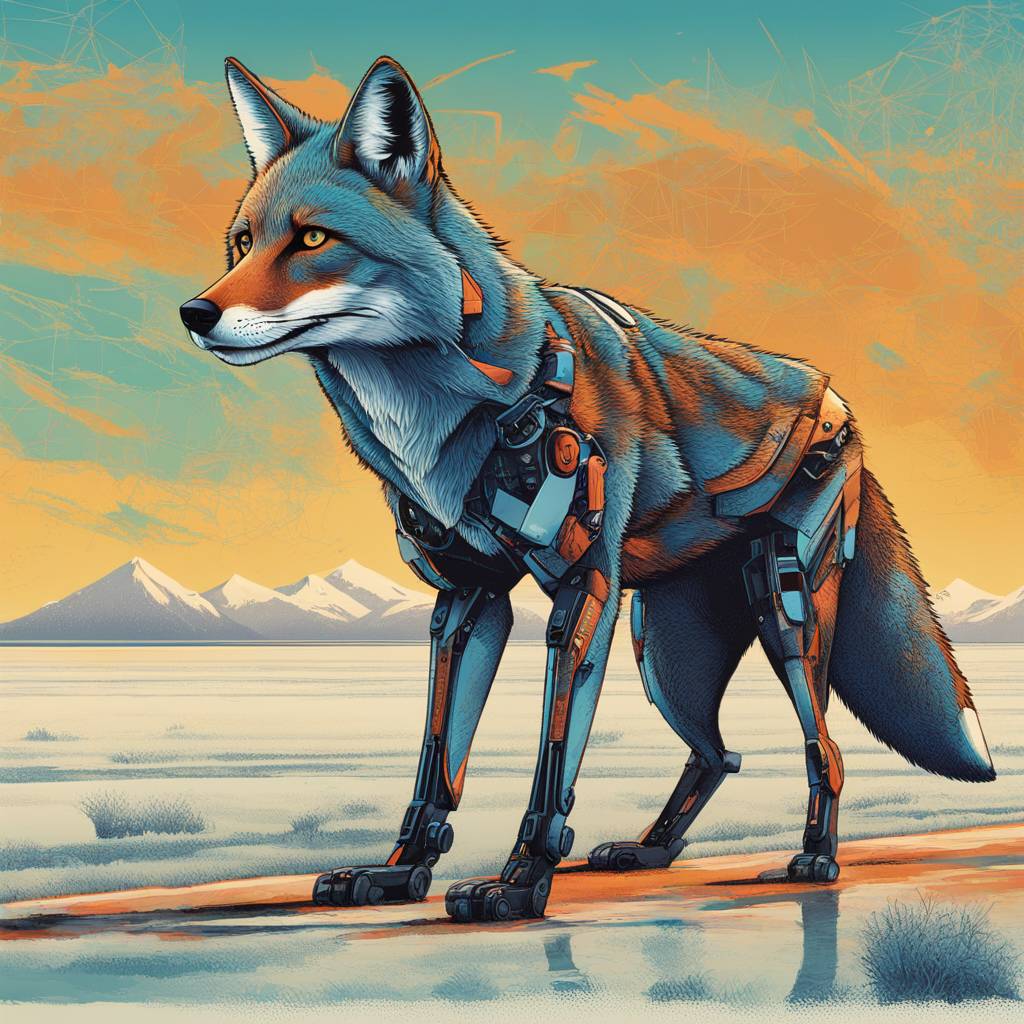The Alaska Department of Transportation and Public Facilities has introduced a headless robot named Aurora at the Fairbanks airport to help ward off migratory birds and other wildlife that can pose a danger to planes during takeoff and landing. The robot, which is about the size of a labrador retriever, can be camouflaged as a coyote or fox by changing out replaceable panels. The main goal of Aurora is to act as a predator to scare off birds and animals without the need to resort to other means of deterrence. This new approach is being seen as an innovative and cost-effective method to ensure the safety of aircraft and passengers.
Aurora was tested climbing rocks, going up stairs, and displaying predator-like movements in a video released by the transportation department. The robot will patrol an outdoor area near the runway every hour during the migratory bird season to prevent potentially harmful encounters between wildlife and planes. In the past, efforts to deter wildlife have included using flying drones spraying a repellent, as well as releasing pigs near airport landing areas in hopes that they would eat waterfowl eggs. However, these methods have not been as effective as hoped, leading to the development of the robotic predator as a new approach to wildlife mitigation near airports.
The test period in Fairbanks will also evaluate how larger animals such as moose and bears respond to the robot, in addition to its effectiveness with migratory birds. If successful, the transportation department plans to potentially deploy similar robots to smaller airports in Alaska. This could prove to be a more cost-effective alternative to hiring human deterrent teams to scare away wildlife near runways. The Aurora robot, which cost around $70,000 and was paid for with a federal grant, can be controlled remotely from a table, computer, or on an automated schedule. A human handler will always accompany the robot during patrols, ensuring that it can navigate through various weather conditions and potential challenges.
In Alaska, wildlife service teams are used to scare birds and other animals away from runways with loud sounds, and sometimes employ paintball guns. Animal strikes near airports in Alaska have resulted in 92 incidents last year, with 10 in Fairbanks alone. While most strikes do not cause damage to aircraft, the rare occurrence of a bird being sucked into an engine can be costly and dangerous, potentially leading to a crash. The introduction of the Aurora robot is seen as a proactive measure to prevent such incidents and improve the overall safety of airport operations in Alaska.
The use of robotics in wildlife mitigation is not unique to Alaska, with several airports across the country implementing robots for various tasks such as cleaning, security patrols, and customer service. Fairbanks is taking a leading role in wildlife mitigation through the use of the Aurora robot, which represents a new and innovative approach to ensuring airport safety. By testing the effectiveness of the robot in real-world scenarios and assessing its interaction with different types of wildlife, the transportation department hopes to establish a more sustainable and efficient method of deterring animals from airport runways. With the potential for cost savings and improved safety outcomes, the use of robotics in wildlife mitigation is likely to become more widespread in the aviation industry.













